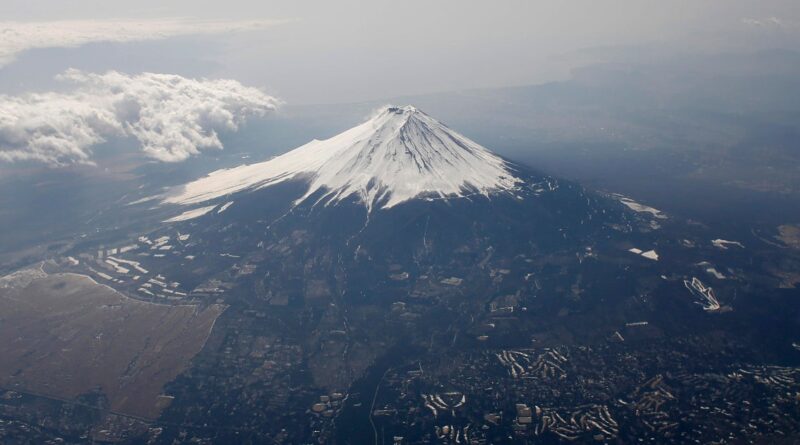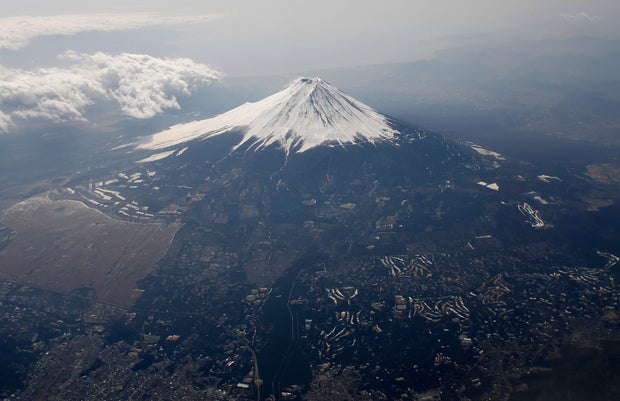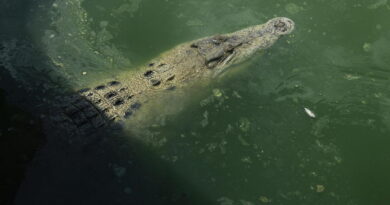Stranded man airlifted from Mount Fuji — then rescued again days later after he returned to get his phone
A climber airlifted with altitude sickness from near the peak of Japan’s Mount Fuji last week returned to the slope and was rescued for a second time just four days later, authorities said Monday.
The climber was identified only as a 27-year-old Chinese student living in Japan. He made an emergency call on April 22 and was airlifted after developing symptoms of altitude sickness, police said, adding that his climbing irons also were damaged.
On Saturday, he returned to the mountain’s Fujinomiya trail nearly 10,000 feet above sea level to look for his cell phone and other belongings left behind, Shizuoka prefectural police said. Another climber found him there unable to move after he apparently got sick for a second time, police said.
“He was suspected of having altitude sickness and was taken to hospital,” a police spokesman in the Shizuoka region told Agence France-Presse on Monday.
It was not known whether he was able to find his phone in the end, local media reported.
Toru Hanai/REUTERS
The mountain’s hiking trails are officially open only from July to early September, but there is no penalty for hiking off-season. There also is no charge or penalty when a climber needs to be rescued, but the Chinese student’s case prompted an uproar on social media and generated calls for him to be charged, at least for his second rescue.
Following the man’s rescue, police in Shizuoka prefecture reiterated its advice against climbing the mountain during the off-season as the weather could suddenly change, making it hard for rescuers to respond, the BBC reported. Medical facilities along the trails are also closed.
Police urged all climbers to use caution, noting that the mountain has low temperatures and is covered in snow even in spring.
The 3,776-meter-high (12,388-foot-high) mountain was designated a UNESCO World Cultural Heritage site in 2013. A symbol of Japan, the mountain called “Fujisan” used to be a place of pilgrimage and is increasingly popular among hikers today.
To control overcrowding and risks from rushed overnight climbing through rocky slopes to see the sunrise, local authorities last year introduced an entry fee and cap on the number of entrants on the most popular trail and will introduce similar rules on other main trails this year.
But exactly how many tourists visit Fuji — and how many is too many — is up for debate, Thomas Jones, a professor of sustainability and tourism at Japan’s Ritsumeikan University, told CBS News in 2023.
“You would have to find consensus” for what constitutes carrying capacity, he said, “and at the moment there isn’t really anything like that. So, there isn’t really a kind of concerted effort to limit the number of visitors there.”
In 2023, more than 220,000 people climbed Mount Fuji between July and September, according to the BBC.






